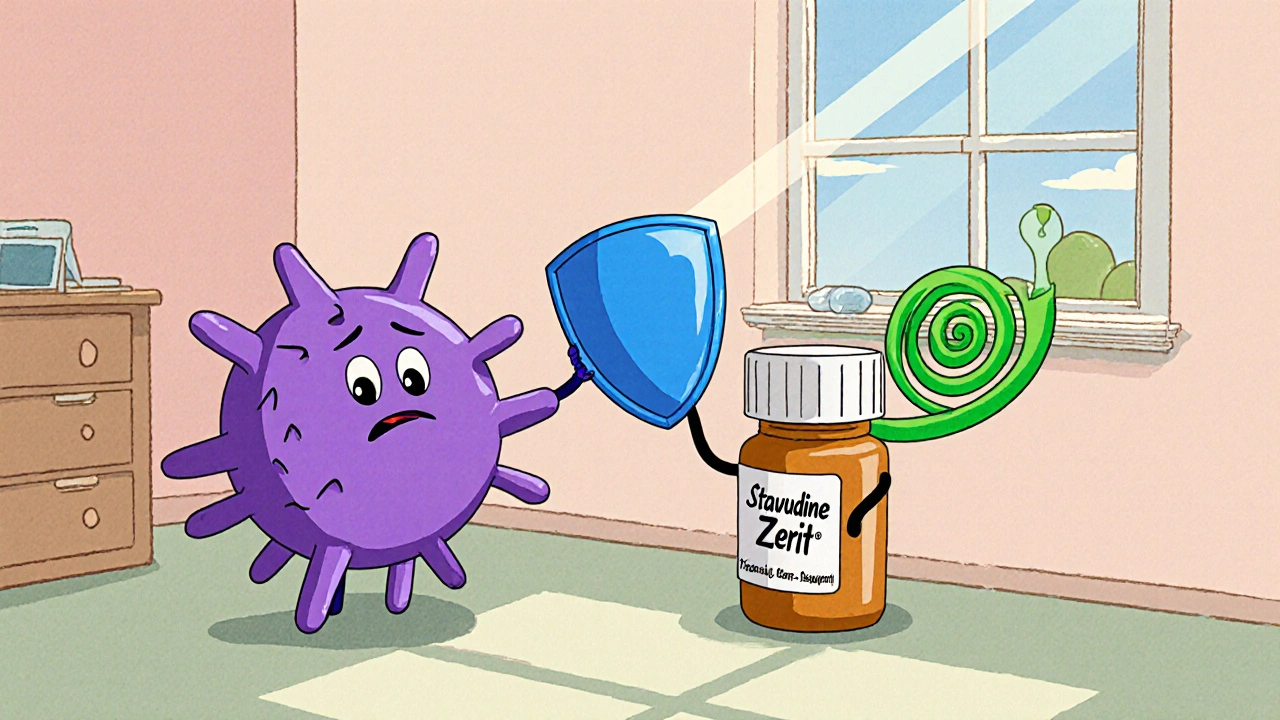When working with Stavudine, an older nucleoside reverse transcriptase inhibitor used in antiretroviral therapy for HIV. Also known as d4T, it was once a mainstay in combination regimens but has fallen out of favor because of its toxicity profile. At the same time, patients living with HIV, the human immunodeficiency virus that attacks the immune system still need affordable drug options, especially in low‑resource settings.
Stavudine is taken orally, usually twice a day, with food to lessen gastrointestinal upset. The standard adult dose is 30 mg twice daily for those under 60 kg and 40 mg twice daily for heavier patients. Because it belongs to the NRTI, a class of drugs that block reverse transcriptase enzymes, it must be paired with at least two other antiretrovirals to prevent resistance. Regular monitoring of liver enzymes, blood sugar, and lipid levels is crucial – stavudine can trigger peripheral neuropathy, lipodystrophy, and mitochondrial toxicity, which may be irreversible if not caught early.
When comparing stavudine to newer NRTIs like tenofovir or lamivudine, the safety gap becomes clear. Tenofovir, for example, offers a lower risk of neuropathy and better bone health, while lamivudine is praised for its tolerability. Still, stavudine’s low price keeps it on formulary lists in some countries. If cost is the driving factor, buying generic versions through reputable online pharmacies can shave off a big chunk of the expense, but you must verify the pharmacy’s legitimacy, check for proper packaging, and watch for counterfeit warnings.
Patients who experience tingling in the feet, unexplained weight loss, or a sudden change in fat distribution should alert their clinician right away. Dose adjustment or a switch to a different NRTI often resolves the issue, but delaying action can lead to permanent nerve damage. Moreover, stavudine resistance mutations (e.g., K65R, M184V) can limit future treatment options, so resistance testing before initiation is recommended when resources allow.
Stavudine may still appear in some low‑cost regimens, but its use requires vigilant follow‑up and a clear understanding of its risk‑benefit balance.
The drug sits within the broader framework of antiretroviral therapy, the combination of medicines that suppress HIV replication. Effective ART relies on adherence, complementary drug mechanisms, and minimizing side effects to keep the virus suppressed. By grasping how stavudine interacts with other agents, how it is metabolized, and what monitoring steps are needed, you can make an informed choice about whether it fits into a patient’s treatment plan.
Below you’ll find a curated set of articles that dive deeper into related topics – from comparing stavudine with newer alternatives to practical guides on buying cheap generics safely, and tips for managing the most common side effects. Use them to build a complete picture before you decide on the best course for your or a loved one’s HIV care.
